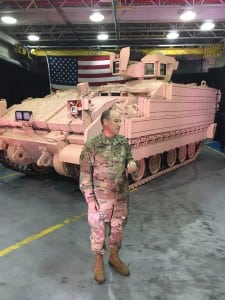
YORK, Pa. – The first completed Armored Multipurpose Vehicle (AMPV) rolled off BAE Systems production line on Dec. 15 and both the company and Army officials are prepared to begin churning them out as soon as resources become available.In the absence of a war in which the M113 replacements are needed on an emergency basis, Maj. Gen. David Bassett, program executive officer for ground combat systems, prefers to continue the deliberate, methodical schedule the program has enjoyed since BAE was…

 By
By 











